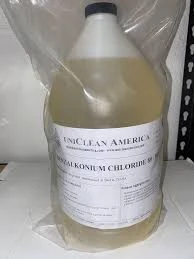coagulation and flocculation in water treatment
Coagulation and Flocculation in Water Treatment
Coagulation and flocculation are fundamental processes in water treatment, crucial for the removal of suspended particles, colloids, and other impurities from water sources. These processes enhance water quality and ensure that it meets health standards before being distributed for consumption.
Coagulation is the initial step that involves the addition of coagulants—chemicals that help destabilize and aggregate fine particles in water. Common coagulants include aluminum sulfate (alum), ferric chloride, and polyaluminum chloride. When introduced to water, these substances neutralize the surface charges of suspended particles, allowing them to clump together. This process is often facilitated by rapid mixing, which helps distribute the coagulant evenly throughout the water.
Once coagulation has occurred, the next step is flocculation, where the smaller clusters of particles, known as flocs, continue to grow by agglomerating into larger, more visible particles. This stage is achieved through gentle stirring or mixing, which encourages the formation of larger flocs without breaking them apart. The flocs formed during this phase are heavy enough to settle at the bottom of the treatment tank, making them easier to remove.
coagulation and flocculation in water treatment

The effectiveness of coagulation and flocculation depends on several factors, including pH, temperature, and the concentration of both coagulants and particles in the water. For optimal results, operators must carefully monitor and adjust these parameters. For instance, the pH level can significantly influence the charge and solubility of the coagulants used, impacting the overall coagulation process.
Following flocculation, the larger flocs will be separated from the water through sedimentation or filtration. In sedimentation, the water is allowed to sit, enabling the heavier flocs to settle to the bottom, where they can be collected. Alternatively, in filtration, water is passed through various media, such as sand or activated carbon, to physically remove remaining particles.
The benefits of coagulation and flocculation extend beyond just turbidity removal. These processes can also significantly reduce the presence of pathogens, heavy metals, and organic substances, thereby improving overall water safety. Additionally, they play a critical role in the overall efficiency of downstream processes, such as disinfection.
In conclusion, coagulation and flocculation are essential in water treatment, providing a reliable method to enhance water quality. As water treatment technologies continue to evolve, understanding and optimizing these processes remains vital for ensuring safe and clean drinking water. Continuous research and development efforts are necessary to innovate new coagulants and improve existing methods, aiming for more sustainable and effective water treatment solutions.
-
Water Treatment with Flocculant Water TreatmentNewsJun.12,2025
-
Polymaleic AnhydrideNewsJun.12,2025
-
Polyaspartic AcidNewsJun.12,2025
-
Enhance Industrial Processes with IsothiazolinonesNewsJun.12,2025
-
Enhance Industrial Processes with PBTCA SolutionsNewsJun.12,2025
-
Dodecyldimethylbenzylammonium Chloride SolutionsNewsJun.12,2025





